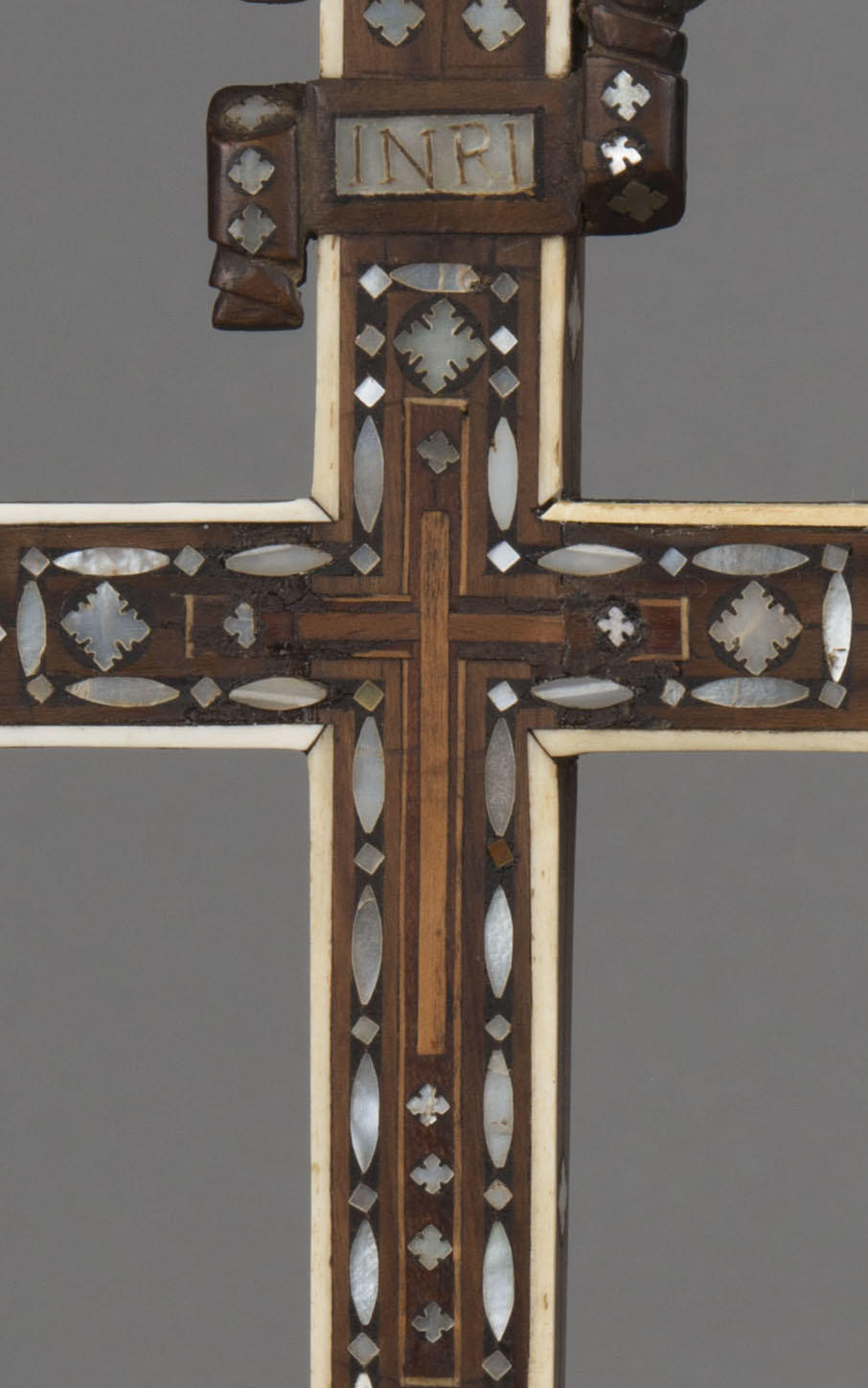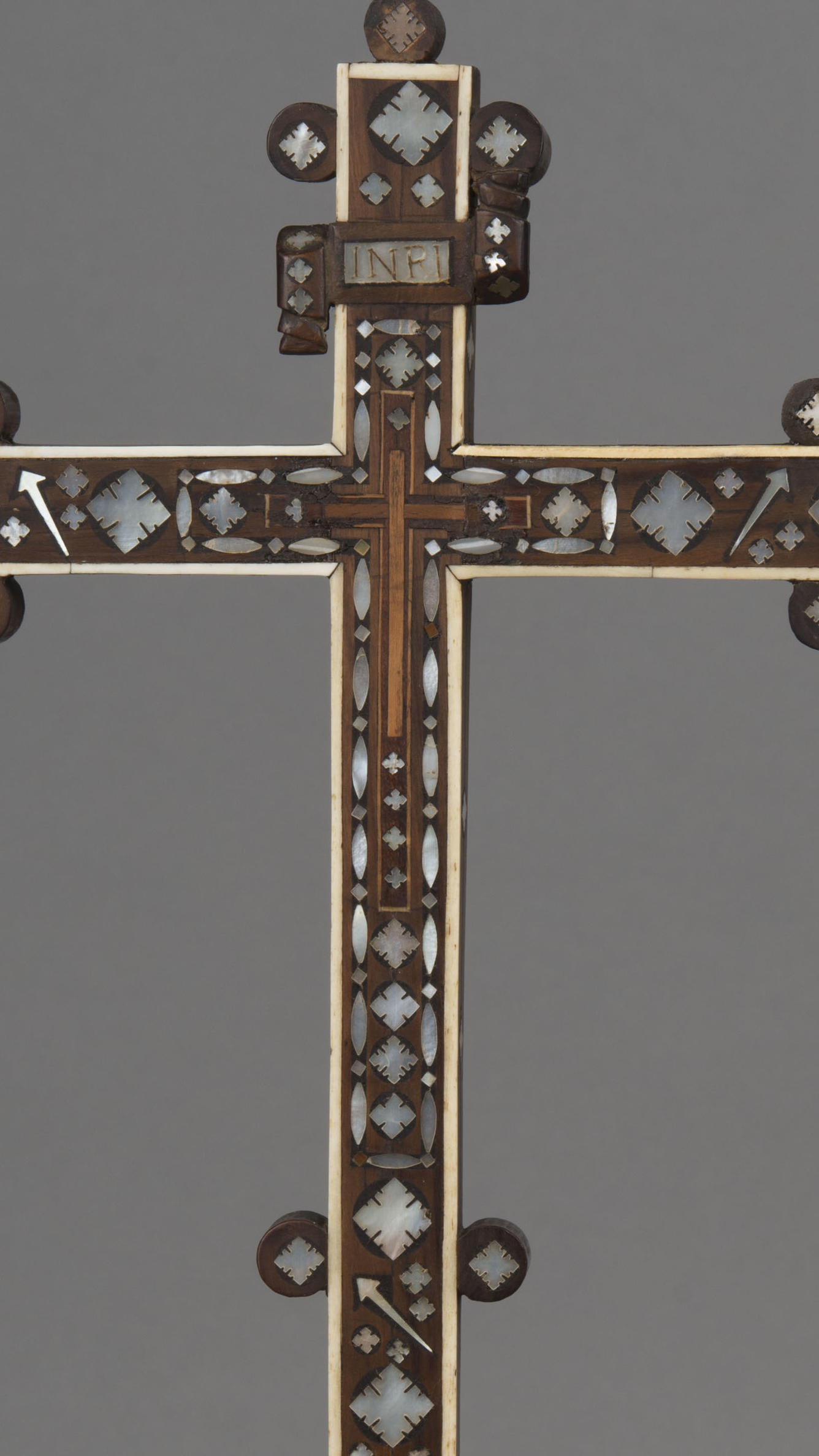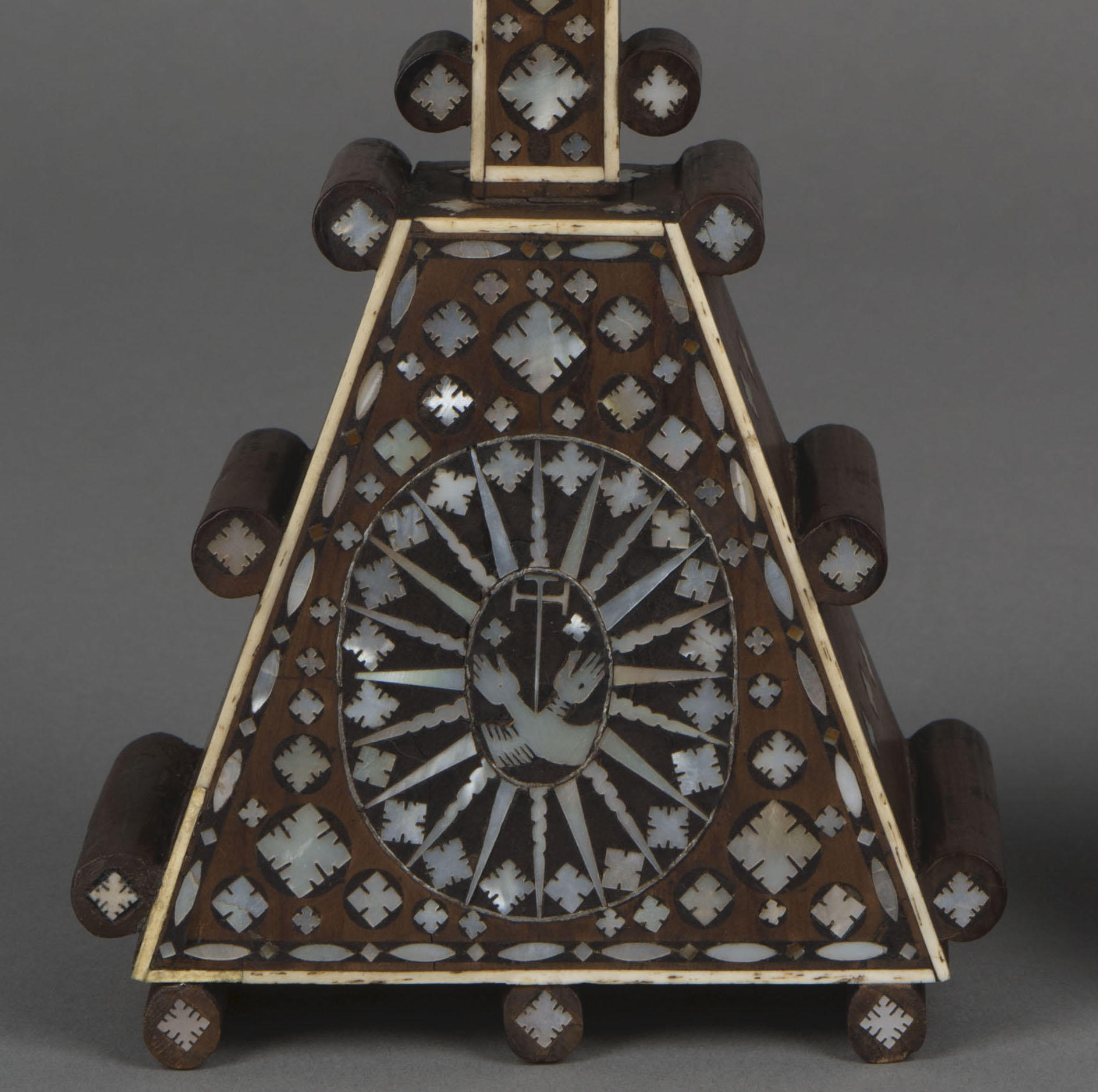On display in the Vatichino, this 17th-century Venetian cross features beautiful mother-of-pearl decorations, bone edging, and various wood inlays.
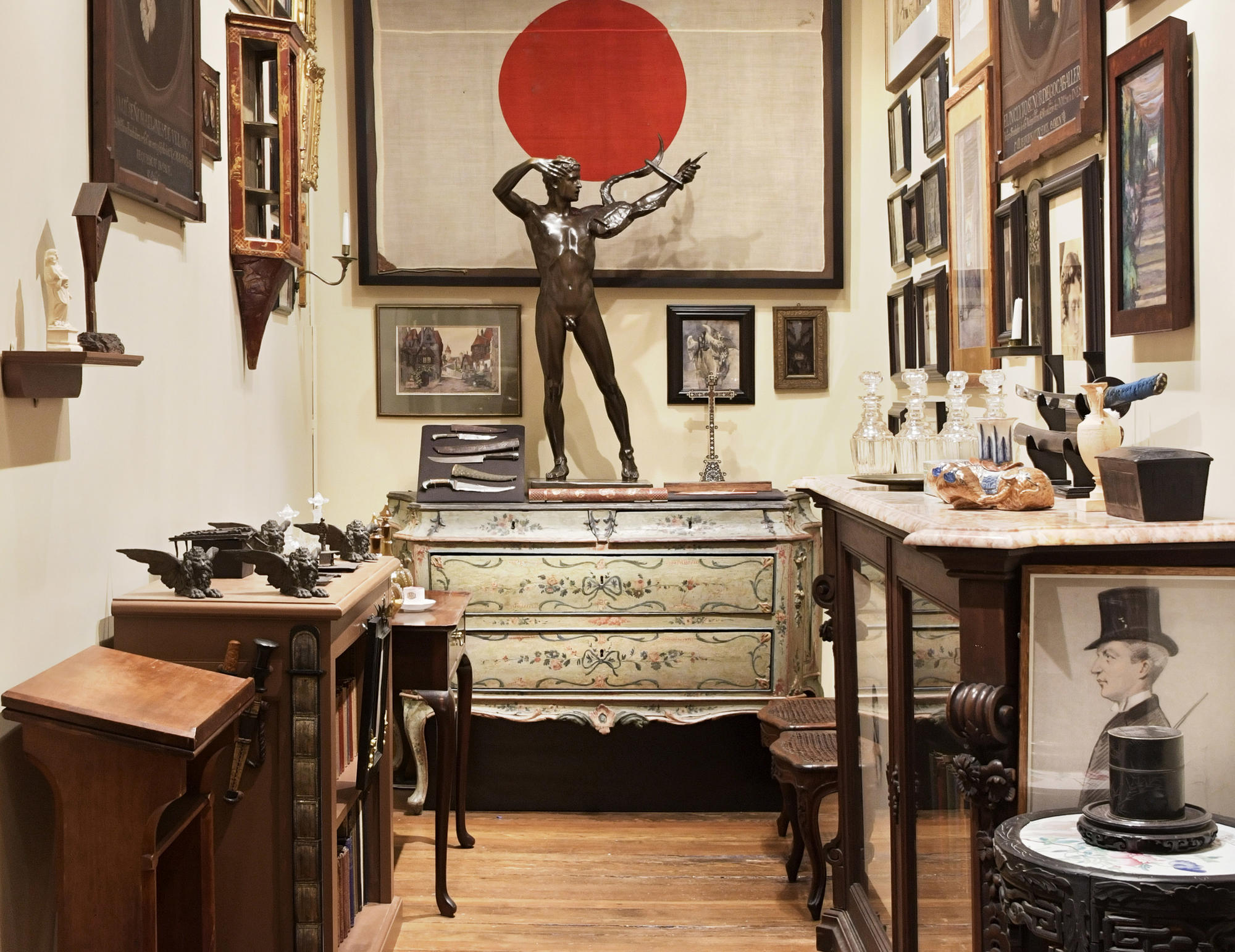
The Vatichino showing the mother-of-pearl cross on top of the Venetian commode
Mother-of-pearl lozenges, diamonds, and even snowflake-like shapes adorn all sides of the cross. Three inlays form the shape of nails, resembling the nails of the cross, as well as a scroll at the top inscribed with “INRI” (“Iesus Nazarenus, Rex Iudaeorum” or “Jesus Christ, King of the Jews”). At the base of the cross is the coat of arms of the Franciscans, a religious order dedicated to Saint Francis, whose members practice poverty, chastity, and obedience. It depicts two crossed arms that bear the stigmata, both beneath a cross.
When this cross was brought to our Conservation Lab in 2019, it was covered in dust and dirt, and was missing a few pieces. Our first step was cleaning. We cleaned each individual mother-of-pearl and bone piece with a tiny cotton swab and saliva—an old art conservation secret! Used since ancient times, saliva, a combination of water and enzymes, provides a readily available and effective cleaning agent. This brought out the beautiful iridescence in the mother-of-pearl pieces and revealed the light color of the bone!
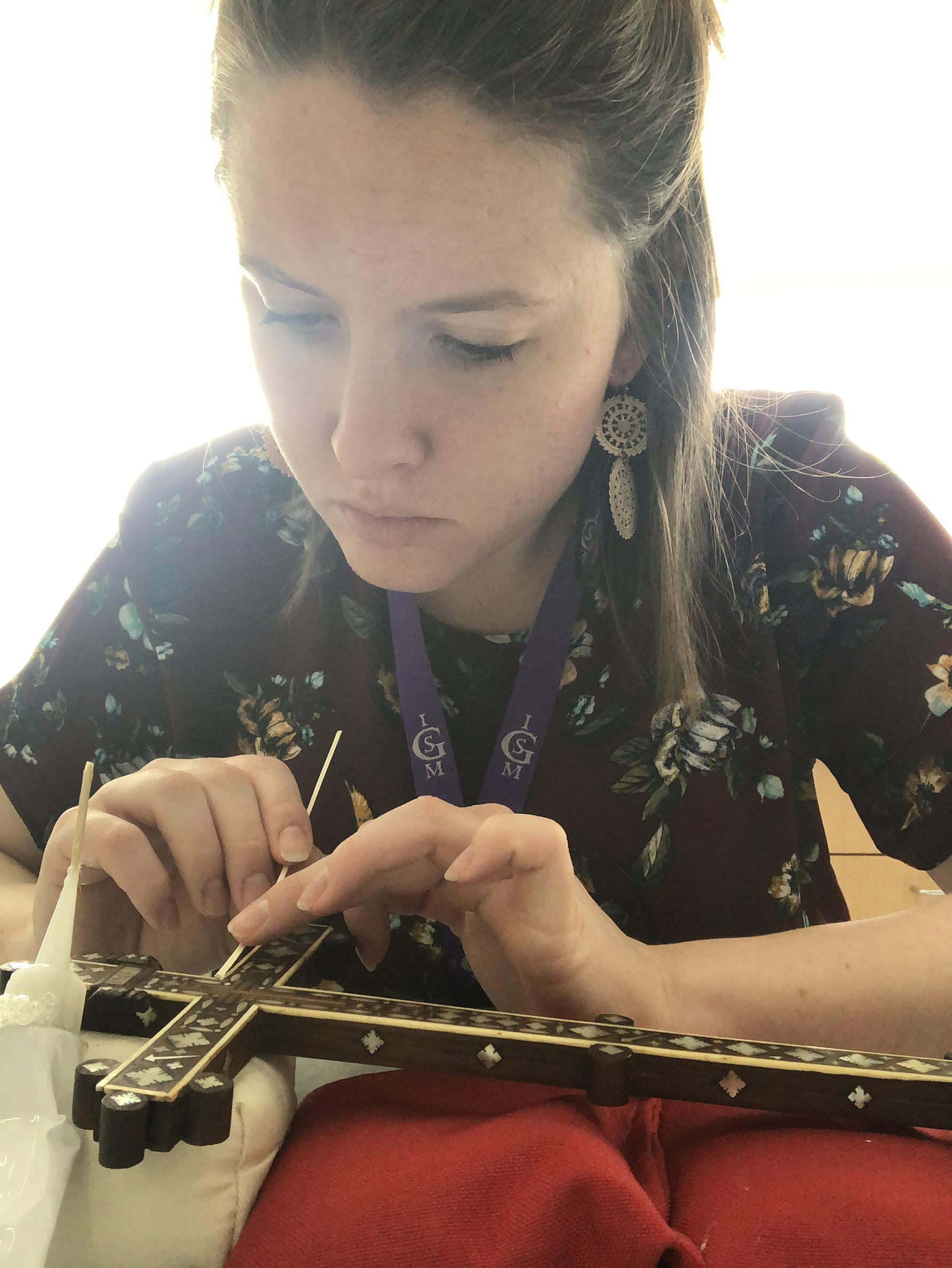
Kaeley Ferguson, Conservation Technician, cleaning the cross with a cotton swab in 2019
The next step was to compensate for the missing pieces of bone. Good conservation treatments should be identifiable by future conservators—and reversible. With this in mind, we replicated the bone for missing areas by using acid-free matboard, a common material used for framing. We cut it to the proper shape and toned it with watercolors and a glossy varnish to match the sheen and aged look of the adjacent, original pieces.
Next, we recreated two cylindrical wooden pieces missing from the upper left and lower right of the cross. We took molds from the existing ones using dental molding (the kind they use to shape retainers) in order to properly replicate the size and shape. Using the molds, we cast an epoxy putty fill and successfully recreated the original shape! Once dry, we painted the replacements to match the dark brown, wooden originals.
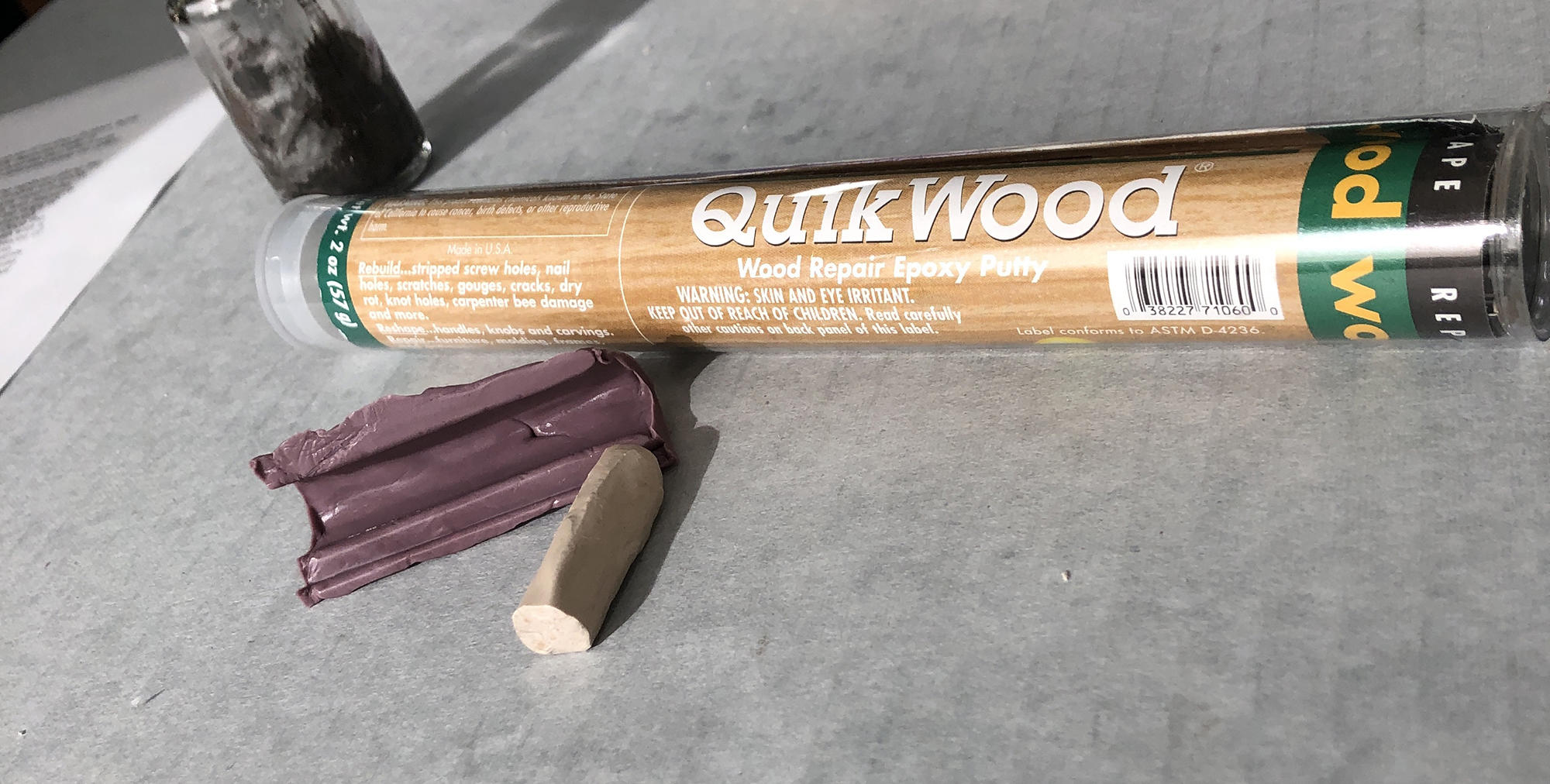
Epoxy Putty replicated piece next to the mold (purple)
Finally, we recreated the mother-of-pearl inlays for each replacement cylindrical piece. With matboard, polyester film, Japanese tissue paper, watercolors, and mica powder (made from ground up mica minerals that are shiny and have iridescent components), we successfully recreated the sheen and iridescence of the mother-of-pearl. We cut the pieces to shape, adhered them into the cylindrical replacement features, and attached them to the cross in their proper positions. Can you tell the difference between the originals and replacements?
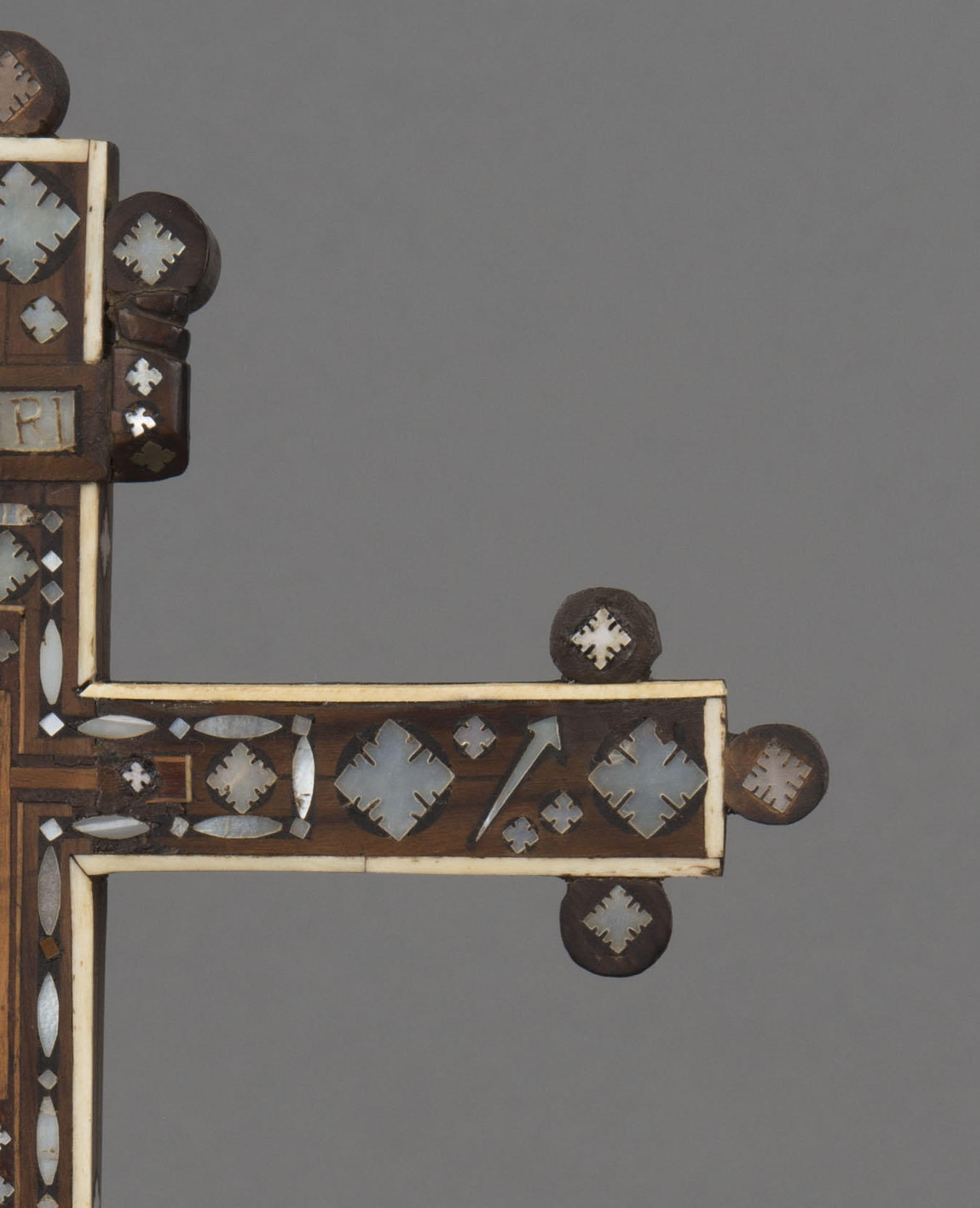
Italian, Venice, Cross (detail), 17th century
On your next visit to the Museum, you can view the restored cross in the Vatichino.
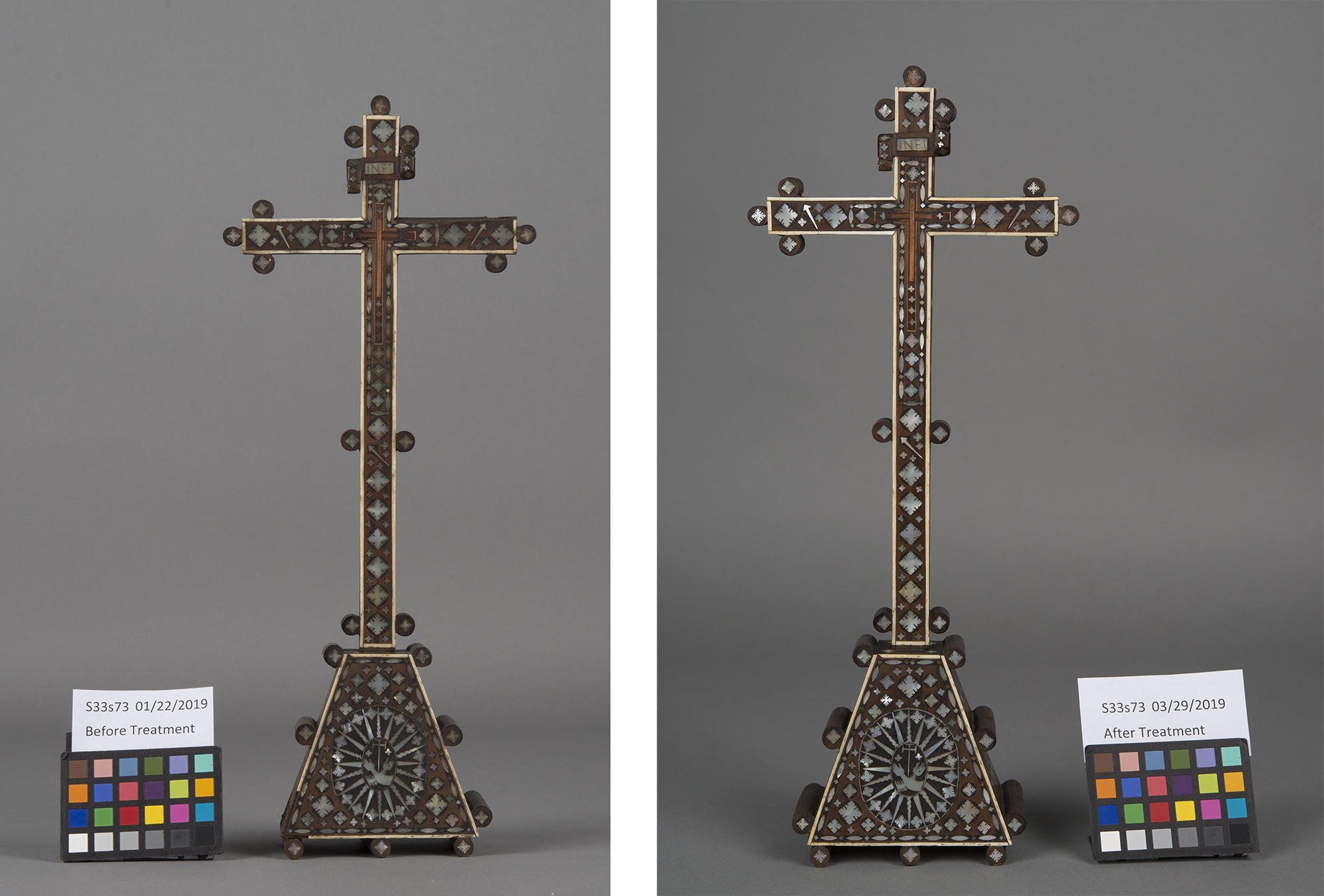
Italian, Venice, Cross, 17th century, before and after 2019 treatment
You Might Also Like

Explore the Collection
Italian, Cabinet and Stand (Stipo con Support a Tavolo), mid 19th-century

Explore the Collection
Indian, Gujarat, Casket, about 1600

Explore the Collection
English, Traveling Chess Set, 19th century
